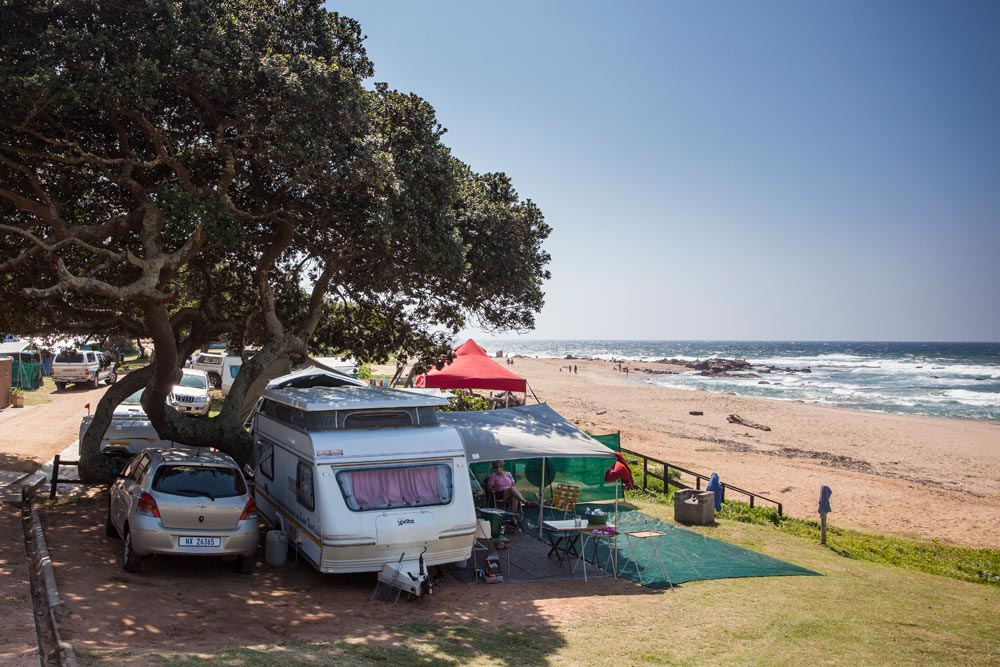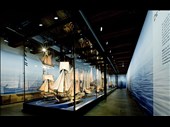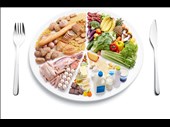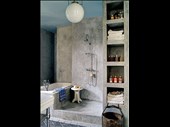Solution for: Rocky Bay field trip
Answer Table
| 1. A | 6. B |
| 2. A | 7. A,D IN EITHER ORDER |
| 3. C | 8. A,D IN EITHER ORDER |
| 4. B | 9. C,E IN EITHER ORDER |
| 5. B | 10. C,E IN EITHER ORDER |
Exam Review
Rocky Bay field trip

HELEN:
I’ve brought my notes on our Biology Field Trip to Rocky Bay, Colin, so we can work on our report on the research we did together.
COLIN:
OK. I've got mine too. Let’s look at the aims of the trip first.
HELEN:
Right. What did you have?
COLIN:
I just put something about getting experience of the different sorts of procedures used on a field trip. But we need something about what causes different organisms to choose particular habitats.
HELEN:
I agree. And something about finding out how to protect organisms in danger of dying out?
COLIN:
In our aims? But we weren’t really looking at that.
HELEN:
I suppose not. OK, now there’s the list of equipment we all had to bring on the field trip. What did they tell us to bring a ruler for?
COLIN:
It was something about measuring the slope of the shore, but of course we didn’t need it because we were measuring wind direction, and we’d brought the compass for that...
HELEN:
But not the piece of string to hold up in the air! Didn’t Mr Blake make a fuss about us leaving that behind.
COLIN:
Yeah. He does go on. Anyway it was easy to get one from another of the students.
HELEN:
Now, the next section’s the procedure. I sent you the draft of that.
COLIN:
Yeah. It was clear, but I don’t think we need all these details of what time we left and what time we got back and how we divided up the different research tasks.
HELEN:
OK. I’ll look at that again.
COLIN:
Then we have to describe our method of investigation in detail. So let’s begin with how we measured wave speed. I was surprised how straightforward that was.
HELEN:
I’d expected us to have some sort of high-tech device, not just stand there and count the number of waves per minute. Not very precise, but I suppose it was good enough. But the way we measured the amount of salt was interesting.
COLIN:
In the water from the rock pools?
HELEN:
Yeah, oh, I wanted to check the chemicals we used in the lab when we analysed those samples - was it potassium chromate and silver nitrate?
COLIN:
That’s right.
HELEN:
OK. And we need the map of the seashore. You just left that to me. And I had to do it while the tide was low, well that was OK, but the place I started it from was down on the beach, then I realised I should have gone up higher to get better visibility. so I had to start all over again. But at least I’d got the squared paper or I’d have had problems drawing it all to scale.
COLIN:
Yes. It looks good. We could get a map of the region off the internet and see if we need to make any changes.
HELEN:
I had a look but I couldn’t find anything. But you took some pictures, didn’t you?
COLIN:
Yeah. I’ll email you them if you want.
HELEN:
OK. I’ll make my amendments using those, then I can scan it into our report. Great.
HELEN:
Now when we get to our findings I thought we could divide them up into the different zones we identified on the shore and the problems organisms face in each zone. So for the highest area ...
COLIN:
... the splash zone?
HELEN:
Yeah, we found mostly those tiny shellfish that have strong hard shells that act as protection.
COLIN:
But not from other organisms that might eat them, predators?
HELEN:
No, that’s not the main danger for them. But the shells prevent them from drying out because they’re in the open air for most of the time.
COLIN:
Right. And since they’re exposed, they need to be able to find some sort of shelter, or cover themselves up. so they don’t get too hot. Then in the middle and lower zones, nearer the sea, we need to discuss the effects of wave action ...
HELEN:
Yes, and how organisms develop structures to prevent themselves from being swept away, or even destroyed by being smashed against the rocks.
COLIN:
I haven’t done anything on the geological changes. I don’t know what to put for that.
HELEN:
No, we weren’t concentrating on that. Maybe we need to find some websites.
COLIN:
Good idea. I’ve got the lecture notes from Mr Blake’s geology course, but they’re too general. But we could ask him which books on our Reading List might be most helpful.
HELEN:
Right. OK, now I did a draft of the section of sources of possible error in our research, but I don’t know if you agree. For example, the size of the sample, and whether it’s big enough to make any general conclusions from. But I thought actually we did have quite a big sample.
COLIN:
We did. And our general method of observation seemed quite reliable. But we might not be all that accurate as far as the actual numbers go.
HELEN:
Yeah we might have missed some organisms - if they were hiding under a rock, for example. I wasn’t sure about the way we described their habitats. I decided it was probably OK.
COLIN:
Yeah, and the descriptions we gave of the smaller organisms, they weren’t very detailed but they were adequate in this context. I'm not sure we identified all the species correctly though.
HELEN:
OK, we’d better mention that. Now, how ...
Questions 1-6
Choose the correct letter, A, B or C.
Rocky Bay field trip
1 What do the students agree should be included in their aims?
A factors affecting where organisms live
B the need to preserve endangered species
C techniques for classifying different organisms
Answer: A Locate Listen from here
2 What equipment did they forget to take on the Field Trip?
A string
B a compass
C a ruler
Answer: A Locate Listen from here
3 In Helen’s procedure section, Colin suggests a change in
A the order in which information is given.
B the way the information is divided up.
C the amount of information provided.
Answer: C Locate Listen from here
4 What do they say about the method they used to measure wave speed?
A It provided accurate results.
B It was simple to carry out.
C It required special equipment.
Answer: B Locate Listen from here
5 What mistake did Helen make when first drawing the map?
A She chose the wrong scale.
B She stood in the wrong place.
C She did it at the wrong time.
Answer: B Locate Listen from here
6 What do they decide to do next with their map?
A scan it onto a computer
B check it using photographs
C add information from the internet
Answer: B Locate Listen from here
Questions 7-8
Choose TWO letters, A-E.
Which TWO problems affecting organisms in the splash zone are mentioned?
A lack of water
B strong winds
C lack of food
D high temperatures
E large waves
7. Answer: A,D IN EITHER ORDER Locate Listen from here
8. Answer: A,D IN EITHER ORDER Locate Listen from here
Questions 9-10
Choose TWO letters, A-E.
Which TWO reasons for possible error will they include in their report?
A inaccurate records of the habitat of organisms
B influence on behaviour of organisms by observer
C incorrect identification of some organisms
D making generalisations from a small sample
E missing some organisms when counting
9. Answer: C,E IN EITHER ORDER Locate Listen from here
10. Answer: C,E IN EITHER ORDER Locate Listen from here
Other Tests
-
Total questions: 11
- 11- Summary, form completion
-
Total questions: 9
- 2- Plan, map, diagram labelling
- 4- Summary, form completion
- 3- Sentence Completion
-
Total questions: 10
- 10- Summary, form completion
-
-
Total questions: 10
- 4- Matching
- 6- Sentence Completion
-
Total questions: 10
- 7- Summary, form completion
- 3- Sentence Completion











